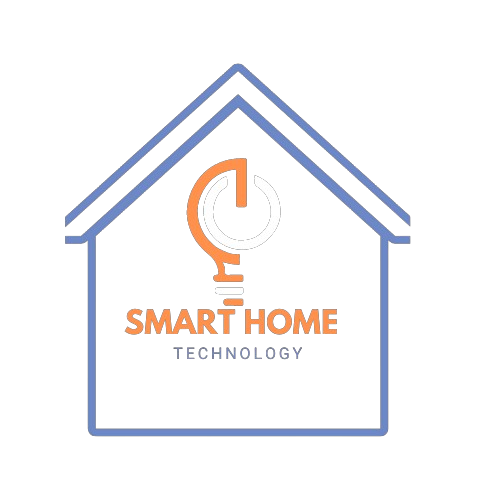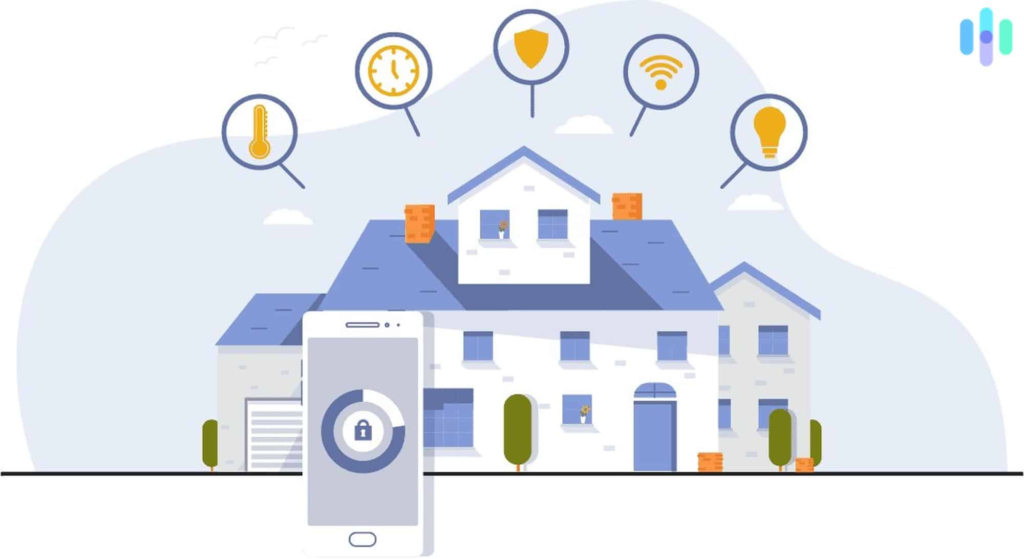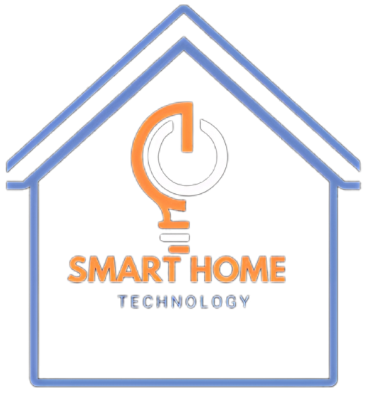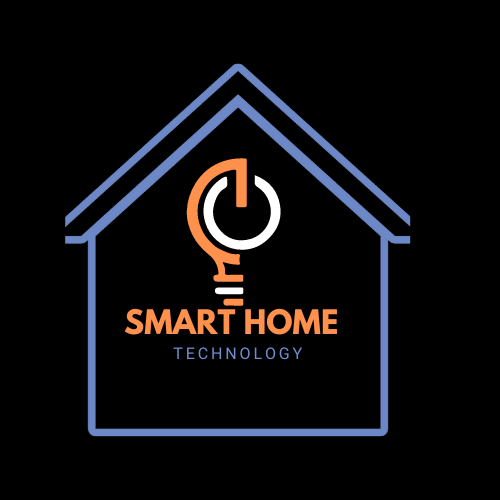Learn how to create a voice-controlled smart home in just five easy steps! Start by learning the basics, like picking the best competent helper and connecting your devices, to enjoy a smooth, hands-free lifestyle.
Table of Contents
Introduction


Do you know that feeling when you come home after a long day and wish everything would turn on or change to match your mood? With a voice-controlled smart home, it’s easy to set up and possible. This guide will help you easily play music, dim lights for movie night, and control the heat from the comfort of your couch, making your home more innovative and convenient.
I’ll guide you through five easy steps anyone can follow, even if they’re not tech-savvy. I know this from experience, having made all the mistakes myself. Let’s explore the world of voice-controlled devices, from choosing the best competent helper to ensuring all your gadgets work well together. Your future self will appreciate it!
How to Set Up a Voice-Controlled Smart Home
Choose Your Smart Assistant
I remember the first time I tried to set up my smart home. I bought a lot of toys, but I didn’t know they didn’t work well together. (Yes, that’s a beginner’s mistake.) The first step to creating a voice-controlled smart home is choosing the right competent helper, which is more important than you may realize.
Your choices usually include Alexa (Amazon), Google Assistant, or Siri (Apple). Each has its own method, so they need to work well together. If you use Apple products, Siri works excellently with your iPhone and other Apple devices. Alexa is great if you’re like me and want to use different devices from other brands. Google Assistant is great if you like using Google Nest devices and searching the web by mouth.
One lesson I learned is that the hard way is to look. Look at your gadgets and apps before making a decision. I had a smart thermostat designed to work only with Alexa, but I tried to make it work with Siri. That was a significant error. Avoid stress and make plans in advance!
Here’s a pro tip: Start with a smart speaker or display if you’re unsure. These serve as the central part of your system. I tried using an Amazon Echo Dot, which turned on lights and played music well. Later, I put a Google Nest Hub in the kitchen to help with recipes and to have a screen to see things. Beginning with small steps can help you find what works best for you.
Choose your competent helper carefully because it’s the base for everything else!
Here’s the entire content for sections 2 through 5 of the article:
Invest in Smart Devices
Let’s discuss the fun part—choosing the tools! I got a bit carried away at the beginning. I got some great new gadgets but didn’t ensure they would work with my competent helper. That’s a significant error! I advise beginning with small steps and concentrating on what’s most important.
Smart speakers or screens are a great starting point if you’re just starting. Think of them as the brains of your smart home. I started with an Amazon Echo Dot, which was very cheap and helpful. A Google Nest Mini or Apple HomePod Mini can both work well, based on what devices you already use. These devices allow you to handle other gadgets using only your voice. It’s incredible how good it feels to say, “Turn off the living room lights,” and it happens. No more getting lost!
Once you have your helper, consider your way of living. Smart plugs changed everything for me. They’re cheap, simple to set up, and can make almost anything a “smart” gadget. I connected my old lamp, and now I can turn it on with just a word. I installed bright lights for mood lighting and a smart thermostat to save on energy costs.
Tip: To prevent compatibility issues, choose gadgets with the “Works with Alexa” or “Compatible with Google Assistant” label. Focus on products that address specific problems. For example, a smart lock like August or Schlage can help if you often forget to lock the door. Similarly, if you usually leave the TV on, a smart plug can turn it off automatically.
Begin small, try things out, and build your setup. You don’t have to buy everything all at once!
Connect and Configure Devices
Here’s where the magic happens—and where I hit a few speed bumps. Connecting your devices to your intelligent assistant is easy if you follow the steps. If you think, “I don’t need the manual,” you might find yourself searching online for how to reset your smart plug at midnight.
First, download the app for your competent helper (such as Alexa, Google Home, or Apple Home) and log in with your account. After setting up your smart speaker, add devices one at a time. Most gadgets have a QR code you can read or put in pairing mode. The tools are usually easy to use, but how they work can differ by brand.
Here’s a helpful tip: Give your gadgets bright names. Instead of using names like “Light 1” or “Plug 2,” use more explicit names, such as “Living Room Lamp” or “Bedroom Heater.” This makes using voice requests a lot simpler. Imagine trying to remember which light is which when you’re half-asleep. No, that’s not enjoyable.
What’s another lesson I learned difficultly? Make sure your gadgets are connected to the same Wi-Fi network. Some devices only connect to 2.4 GHz networks, so check your wifi settings. If a device won’t connect, try restarting both the device and the computer. This often helps.
Make sure to test each gadget after you set it up. Say, “Alexa, turn off the living room lamp,” or “Hey Google, what’s the weather?” If everything works, you’re all set. If not, don’t worry. Check your settings and try to fix the issue. It’s all part of the journey!
Automate Your Smart Home
After setting up your gadgets, you can start using them. Setting up habits and automation to do your homework independently feels magical.
Begin by thinking about your daily routines. I don’t like struggling with lights in the morning, so I set up a routine to turn on my bedroom light and start the coffee maker at 7 AM. It’s like my smart home understands me better than I do!
Most smart helpers have a “Routines” option in their app. I created an order for Alexa that says, “Goodnight.” This command turns off all the lights, locks the door, and sets the thermostat to 68°F. Google Assistant has a “Home & Away routines” feature that works similarly. Siri? The same applies to “Shortcuts.”
Here’s some advice I wish I had known sooner: keep it simple. Begin with easy tasks like turning off lights when you leave home or adjusting the heat to save energy during the day. Once you understand how it works, you can start adding more artistic activities. For example, I created a “Movie Night” process that lowers the lights, shuts the blinds, and turns on my TV.
Try using voice instructions, too. If you say, “Alexa, start my workout,” it can play your favorite music, change the room temperature, and start a time. It’s great when everything works well together!
Test, Adjust, and Expand Your Setup
Your smart home is never truly “complete.” It’s still being developed, and that’s part of the enjoyment. When I first set everything up, I thought it was great. But then I discovered that my bedroom lights were too bright for bedtime, and my heater wasn’t working right. Make some adjustments.
Begin by checking all your routines and orders. If something isn’t working right, check the settings. Your device might need a software update, or you may need to change the settings. Feel free to try new things! One weekend, I spent a lot of time experimenting with different light colors and brightness to create the perfect relaxing atmosphere. It was worth it.
When you’re ready to grow, consider what you need. I got a smart security camera for the front door and a Ring Doorbell that worked well with what I already had. If you enjoy gardening, consider getting a robot Hoover to help with cleaning or smart sprinklers.
Lastly, keep in mind that technology changes over time. Look out for new tools or updates that can improve your system. I discovered that my intelligent assistant can connect to my car, so I can turn on my porch lights before I get to the garage. That’s awesome!
Creating a smart home involves trying different things and learning what works best. Enjoy yourself, and don’t worry if things don’t go perfectly initially. It’s all part of the process!
How to Protect Your Privacy with Voice Assistants


As intelligent assistants become a more significant part of our lives, protecting your information is essential. Here’s how to protect your data:
- Review Privacy Settings – Regularly check and customize privacy controls in your smart assistant’s app.
- Limit Voice Data Storage – Disable or set auto-delete options for stored voice recordings.
- Use Strong authentication – Turn on voice recognition, PINs, or two-factor identification to strengthen your security.
- Manage Device Permissions – Limit app and microphone access that isn’t needed.
- Mute When Not in Use – Use the physical mute button to avoid unintended voice activations.
- Frequently Clear Voice History – Remove saved voice recordings to protect your info.
- Use a Secure Network – Connect your assistant to a secret, encrypted Wi-Fi network.
- Avoid Sensitive Conversations Near Devices – Be careful about talking about private information when the device can hear you.
- Check for Security Updates – Always keep your hardware and software updated to stay protected from security risks.
- Pick Assistants that Focus on Privacy – Choose brands that care about data security and clearly explain how they use your data.
Steps to Secure Your Voice Assistant from Hackers
Hackers can take advantage of intelligent assistants if they aren’t adequately secured. To keep your device safe, take these precautions:
- Enable Strong Passwords and multi-factor Authentication (MFA) to protect access to your smart assistant app and linked accounts.
- Disable Superfluous Features: If not used, turn off third-party skills, remote access, and shopping purchases.
- Monitor device activity logs to look for any unauthorized commands or logins.
- Create a Guest Network: Connect your intelligent assistant to a Wi-Fi network that is different from the ones used by your other devices.
- Update Security Patches and Firmware: To improve security and fix vulnerabilities, install updates as soon as possible.
How to Use Multilingual Features in Smart Assistants
Intelligent assistants now support multiple languages, making them more accessible for bilingual households. Here’s how to maximize multilingual features:
- Enable Multilingual Mode – Set up your assistant to understand and respond in multiple languages.
- Switch Between Languages Easily – Use specific wake words or settings to change languages instantly.
- Customize Language Preferences Per User – Set individual voice profiles for different family members.
- Use Translation Capabilities – Ask your assistant to translate phrases or act as an interpreter.
- Integrate with Smart Home Devices in Different Languages – Set up commands in multiple languages for seamless interaction.
- Leverage Localized Content – Access region-specific news, weather, and entertainment in your preferred language.
- Practice Language Learning – Use your assistant for pronunciation help, vocabulary building, and interactive lessons.
Clever Assistant Features Every Senior Should Know


Intelligent assistants can make life easier for seniors by offering hands-free help and accessibility features. Essential functions include:
- Voice-Activated Emergency Assistance – Call emergency contacts or alert medical services using voice commands.
- Reminders for Medications & Appointments – Set voice alerts for daily tasks and prescriptions.
- Smart Home Control – Adjust lights, temperature, and security without moving.
- News & Weather Updates – Get real-time information without needing a screen.
- Entertainment & Social Connection – Play music, listen to audiobooks, or call loved ones.
- Accessibility Features – Adjust speaking speed, increase volume, or enable screen reading for better usability.
- Voice-Controlled Shopping – Order groceries and essentials without using a phone or computer.
- Daily Routine Assistance – Schedule reminders for exercise, hydration, and self-care activities.
- Home Security Integration – Use intelligent assistants with cameras and locks for added safety.
- Simple & Intuitive Controls – Set up easy commands for non-tech-savvy users.
10 Ways Smart Assistants Simplify Daily Life
- Hands-Free Scheduling – Manage calendars, set reminders, and create to-do lists effortlessly.
- Smart Home Automation – Control lights, appliances, and security systems with your voice.
- Instant Information Access – Get answers to questions, from recipes to trivia, in seconds.
- Voice-Controlled Entertainment – Play music, audiobooks, and podcasts without lifting a finger.
- Real-Time Translation & Language Support – Communicate in different languages with ease.
- Seamless Shopping & Ordering – Order groceries, food, and essentials using voice commands.
- Health & Fitness Assistance – Get guided workouts, meditation sessions, and hydration reminders.
- Navigation & Traffic Updates – Ask for live traffic reports and optimal routes before leaving.
- Personalized Routines – Set up morning and bedtime routines to automate daily tasks.
- Home Security & Monitoring – Check security cameras, lock doors, and activate alarms via voice.
Intelligent assistants are becoming integral to modern homes, and these features ensure a seamless, efficient, and secure experience.
Conclusion
There you go—five easy steps to turn your home into a place controlled by your words. Setting up a smart home is easy and enjoyable, from choosing the right helper to automating tasks that simplify your life. You may face some challenges, but believe me, it will be worth it in the end. Picture always being able to find your light switch without any trouble!
Now it’s your turn. Begin with small steps, try things out, and let your smart home expand as you go. Do you have any questions or tips to share? Share your thoughts in the comments—let’s chat about smart home setups!
FAQs
What’s the intelligent assistant for beginners?
It depends on your ecosystem! If you’re an iPhone user, Siri is seamless. For versatility, Alexa is great, and Google Assistant excels at web integration.
Do I need a hub to set up a smart home?
Not always. Manintelligentrt assistants (like Echo or Google Nest) work as hues, but some systems, like Zigbee, might require one for more complex setups.
How much does it cost to start a smart home?
You can start for under $50 with a smart speaker and some essential devices, such as smart plugs.
Are smart homes secure?
They can, but they should update software regularly and use strong passwords. Enabling two-factor authentication is also a good idea.
What if I have a mix of smart devices?
No problem! Ensure they’re compatible with the same assistant, or connect them with a bridging tool like IFTTT.



